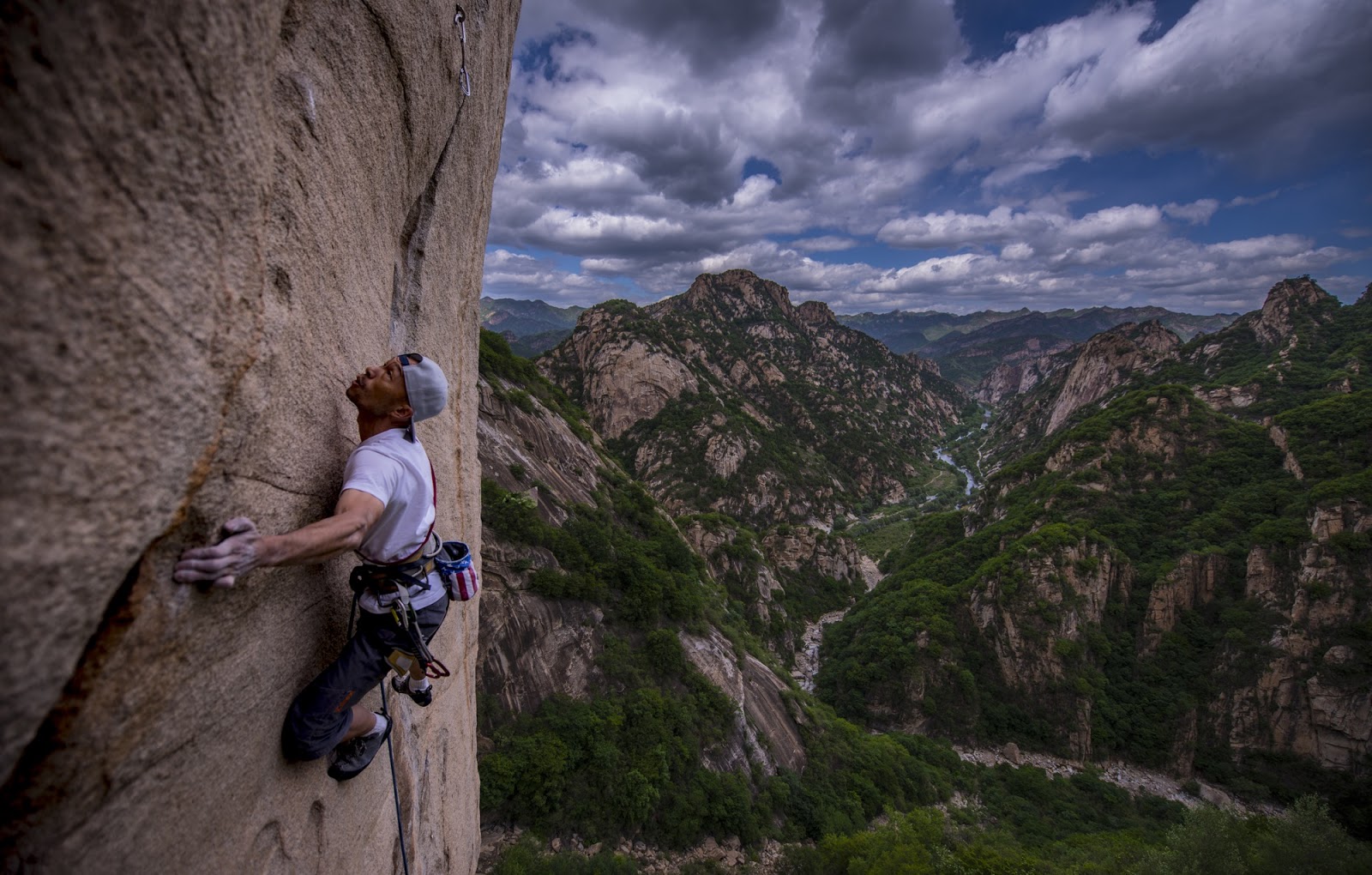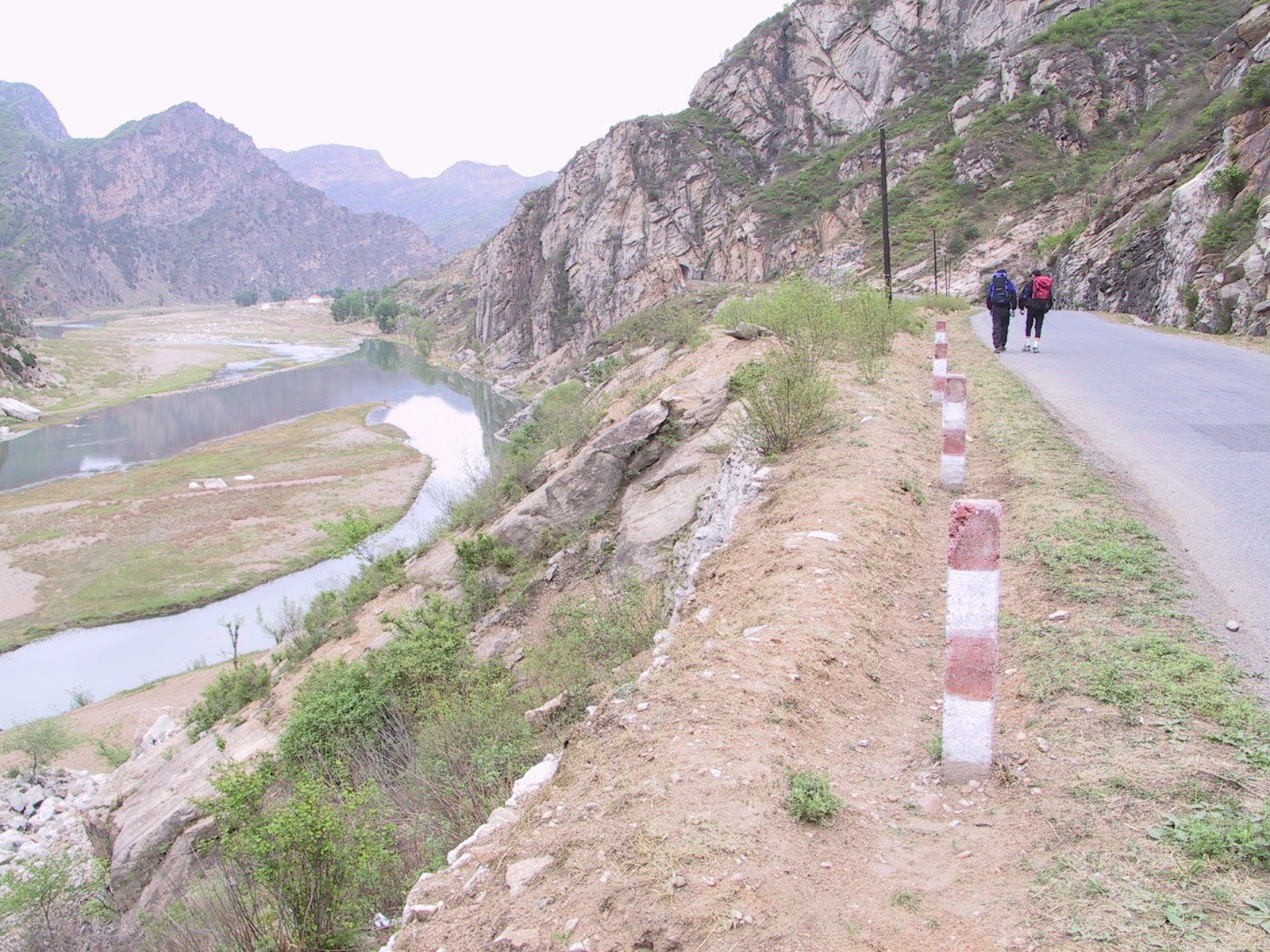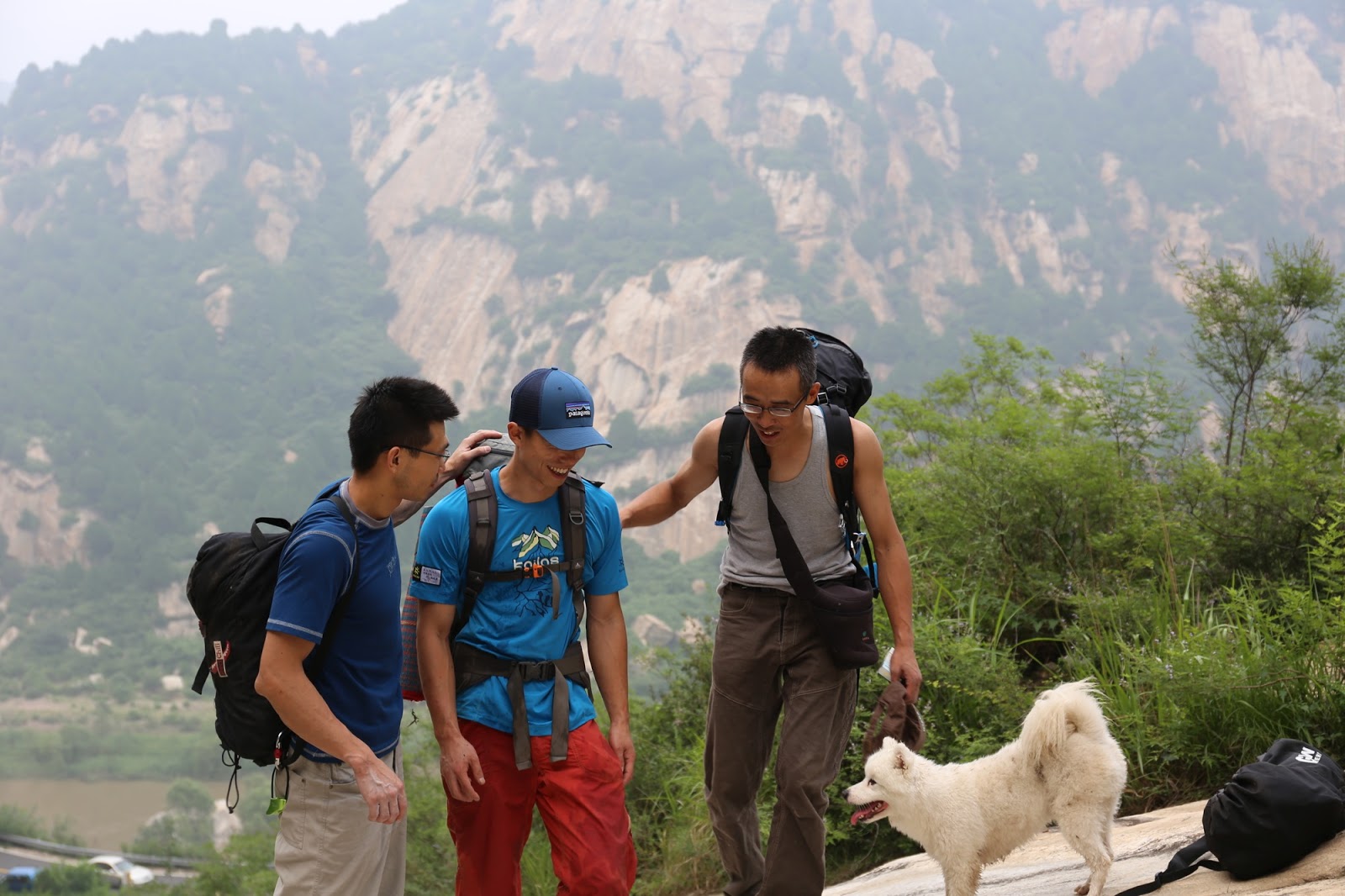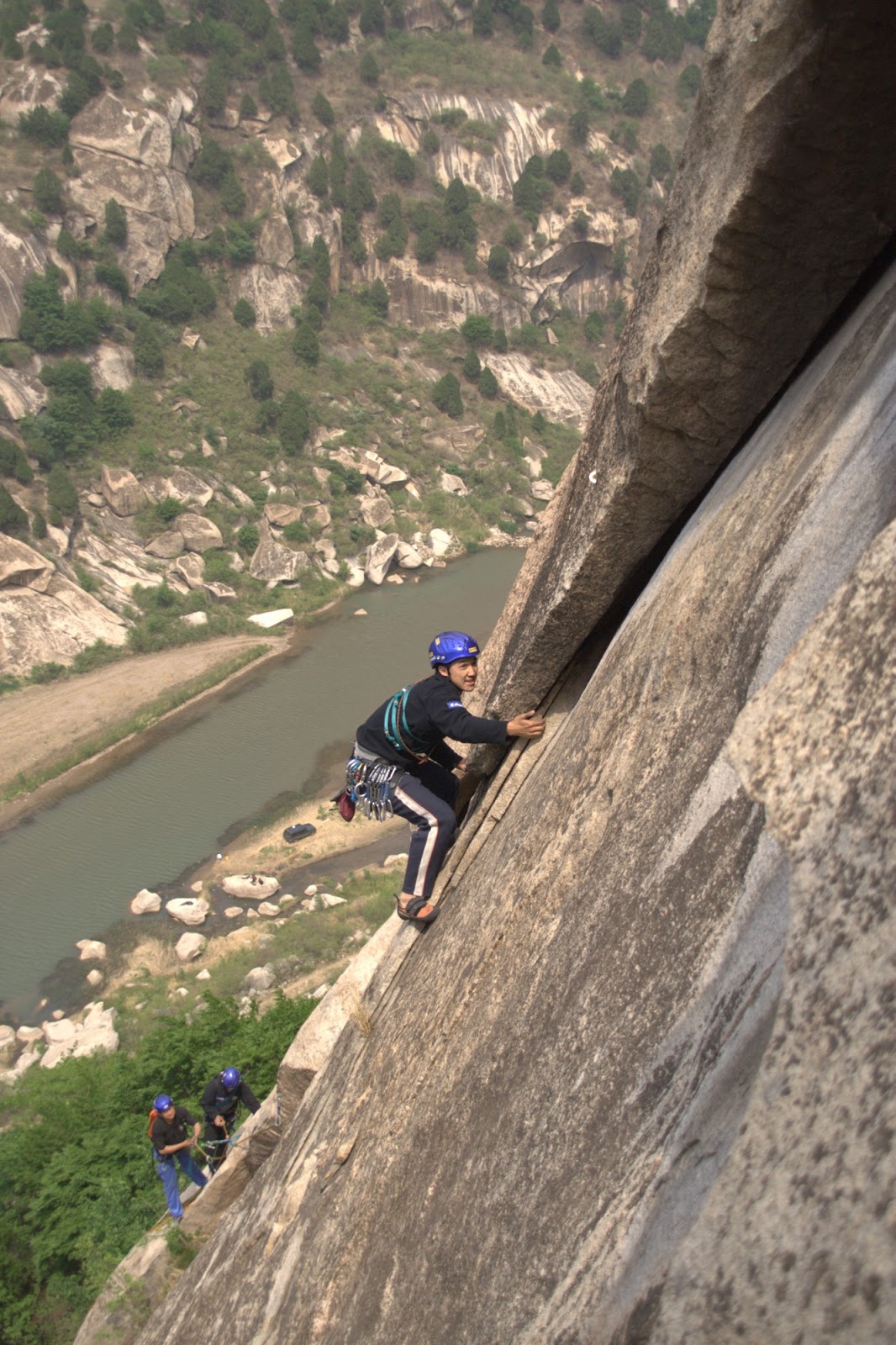From subculture to mainstream: Rock climbing’s rise in China
Two decades ago, rock climbing was a recreational activity in China practiced by a dedicated handful. Now — with its newly minted status as Olympic sport — it is the country's hottest new adventure sport.

As the tangerine dusk wavers above granite crags along a dashing, winding river, dozens of sweaty hikers retreat to their campground or the crude guesthouse. Humid summer nights are the best when accompanied by tipsy chatter, but as midnight approaches, the people tire of conversation, and begin to climbing to the roof; some try slack-lining in the courtyard, while others hang from underneath table surfaces. A few start snoring on the ground.
This was a scene from two decades ago at Baihe Gorge, 60 miles northeast of downtown Beijing. The people weren’t on a spiritual retreat or under the influence of pharmacopeia, but they did have an addiction: to rock climbing.
“When it’s the weekend, and you’re out of work and school, suddenly you have everybody to talk to about your passion,” 48-year-old Beijing climber Kāng Huá 康华 said. The group comprised professors, IT workers, public servants, and those in finance. On Fridays after work they would hop into their cars with their climbing gear, pick up a climbing partner or two, and drive over to Baihe. Others would take an early-morning bus on Saturday and then carpool for two and a half hours on dirt roads to reach the climbing site.
Baihe is a wilderness area dotted with dozens of crags, mostly granite, along a 20-kilometer stretch of a twisting river. The bluffs and crevices offer hundreds of climbing and bouldering options. In winter, waterfalls in the region become inclined frozen surfaces, which are ideal for ice climbing. In the 1980s, taking advantage of those geological features, China’s national mountaineering team practiced ice and rock climbing techniques in Baihe to prepare for expeditions in the southwest. In the 1990s, a few climbing pioneers started to put up bolts on the walls and develop routes in the gorge, attracting Beijing-based rock nerds to the then-primitive climbing zone.
“Those weekends were the happiest time of my life, and a little crazy for sure,” Kang said.
Baihe’s early days

Kang is known in China’s climbing circle as one of the first civilians to pick up mountaineering and climbing techniques. Sometimes, he learned the hard way. In 1999, when Kang was trad climbing, where climbers carry and place removable anchoring devices themselves, his protection — uncertified ropes from a nearby factory and streetside pitons hammered by a neighborhood blacksmith — failed him when he had to rely on his gear to catch him when his sore hands slipped. His body dropped 40 feet onto — very luckily — sand, but he was still knocked unconscious for 30 minutes. A minor compression fracture on his spine kept him bedridden for three months.
Kang’s spirit for risk and adventure was widely respected among the tiny Beijing climbing community of less than 100. After his recovery, he became an advocate for certified protection gear in China. Only two percent of the Chinese population had access to the internet at the turn of the century, but as a computer science major, Kang could snatch up global adventure and climbing gear news on foreign websites, day and night. His above-average English allowed him to analyze and distribute the information in online forums and chat groups.
In 2000, Kang and five other climbers co-founded Baihe Climbing Foundation (白河攀岩基金 báihé pānyán jījīn) with the goal of making Baihe a more welcoming and safer climber’s paradise. The organization received donations from climbers to purchase better bolts, anchors, drills, and ropes to bolt more routes. The group compiled and publicized useful information for climbers coming from Beijing or beyond. It also advocated for sustainability and environmental conservation in the area.
“Outdoor activities, rock climbing included, emphasize protecting the environment. Baihe is our home, so every spring, we organize volunteer climbers to clean up the Baihe area,” said Dīng Xiánghuá 丁祥华, a co-founder of the Baihe foundation. A national climbing champion in 1993, Ding moved to Beijing in 1998 to work for the climbing department of China’s General Administration of Sport, known as the Chinese Mountaineering Association, which was his dream job. Now, he is the director of climbing and mountaineering development at the state sports regulator. For more than 20 years, whenever work is not intense, he will head over to Baihe.
But as Ding and Kang brought more climbers to the area in the aughts, the local government deemed the budding climbing scene harmful for the region. In 2008, officials put up a conspicuous sign along the river: No whoring, gambling, and rock climbing allowed in the area.
“I was astonished when I saw it,” said Ding, who is technically a government official. “An exercise picking up momentum at the time in parallel with pornography? Some local officials had no idea what a healthy lifestyle was all about.” (The government of Shicheng Village in Miyun County, which oversees Baihe, didn’t reply to an interview request.)
Still, climbers kept coming, believing (correctly) that the regulation wouldn’t be enforced. Amateurs and the world’s best climbers alike made the trip. In the spring of 2008, Baihe’s pink granite domes welcomed Ola Przybysz, a former Polish national team climber who was living in Beijing at the time. After graduating from college in Poland, Przybysz accepted a government scholarship to study Chinese language and culture at North China Electric Power University. Her limited English and Chinese at the time gave her a hard time — until a long, laborious trip to Baihe. On an early morning, Przybysz hopped on a bus to Miyun, the town closest to Baihe. From there, she hiked 11 miles along the river before finally meeting fellow climbers at the crags. She found her sanctuary. “[Baihe] became the base of my personal life in China,” Przybysz recalled. “Every single weekend, I was there.”
As Przybysz’s Chinese and English improved, she helped develop routes in the area with Chinese climbers. More climbing options were created along the river, from an entry-level climb featuring juggy handholds and stair-like feet placements to a hardcore ascent sprinked with crimps and pinches for fingertips and narrow edges for feet, from bouldering to sport climbing to trad climbing. In 2018, the Baihe climbing WeChat group reached its 500-person limit. But that same year, after some deaths related to swimming and rafting, authorities banned all outdoor activities in Baihe. Some government-hired locals demolished the bolts and anchors that rock climbers had installed two decades earlier; two-thirds of the 300-some routes became inaccessible after the ban.
Frustrated climbers mourned the shutdown of Baihe.
“Baihe is like my child. It’s not easy to see fewer people coming,” said Ding. Part of him, though, remains hopeful. From an official standpoint, he believes climbing is “positive energy that’s environmentally-friendly and sustainable.” Echoing President Xi Jinping’s quote about nature, he says: “Lucid waters and lush mountains are invaluable assets.”
The future of rock climbing in China

According to Yán Diǎn 岩点, a climbing media platform in China, there were close to 400 climbing gyms in 2019, almost double the number in 2016, the year the Olympics decided to add the adventure sport in the 2020 Tokyo Games. In 2019, the Oscar-winning climbing documentary Free Solo grossed $4 million in China, making it the film’s most successful overseas box office. Data from China’s rock climbing summit shows the country now has more than 100,000 rock climbers, a threefold increase from five years ago. Some provincial and local governments are investing heavily in climbing facilities and cultivating young climbers, even deeming the sport as a method to relieve poverty and raise awareness of outdoor recreation.
Baihe, seemingly overnight, turned from trailblazer to obsolete. But some climbing enthusiasts have never left the crags they love. As climbing areas near the river closed, climbers went farther up the mountains to find new rocks and chart another 200 routes. They tried to negotiate with multiple scenic areas’ administrative bodies to grant them access.
This year, they proved that even the most stubborn and rigid officials could change their minds. After a year of applications, examinations, and endless paperwork, Tianmenshan Park 天门山景区, one of the scenic areas in Baihe, was granted a permit for “high-risk activities,” climbing included.
Dozens of veteran climbers celebrated the news by gathering at Tianmenshan. Climbers now aim to open new lines to attract a new generation of climbers.
“The foreseeable future looks great,” Kang Hua said. “We Baihe climbers are super down-to-earth. But we never changed our original intent: climbing, climbing, and climbing.” Kang has rented a house in the area, and vows to help triple the number of routes — to nearly 1,000 — in five years. For the original Baihe climbers, they want the mountain to become the climbing mecca it used to be.
“Baihe never dies,” Ding said. “Especially when rock climbing is riding on an explosive growth in China.”



